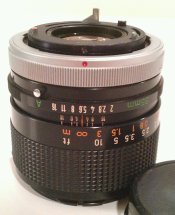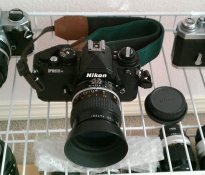The 110 was intended to be a new consumer sensation and money-maker, like the 126 Instamatics, which were introduced in the early 1960s. I do not know if the 110 cartridges solved the film flatness issues that were troublesome in 126. There were some sophisticated 110 cameras: the Minolta 110, the interchangeable lens Pentax system, and a Rollei (I can't recall the model). And recall, there were 110 slide projectors from Kodak and possibly even Leica. 110 sold well but not as well as the 126 marketing wonder. The Disc was the follow-up attempt to develop a new consumer wonder, the ultimate development of "you take the picture we do the rest". But 110 was a dud. It may have sold well for a short while. But the film was just too tiny, and by the 1980s, compact 35mm fixed lens cameras from Japan (like the wonderful Olympus Trip 35s and RCs and the many Minolta and Canon rangefinder models) were easy to use and compact enough for most users. And best of all, their optical quality was excellent, clearly better than 110. I use a Trip 35 now with Tmax 100. The APS system was the last attempt to introduce a new format and money-maker. But it, too, was an attempt to foist off on users a smaller film size that would be "good enough." Many potential customers scratched their heads and decided to keep using 24x36mm 135 film. One brilliant feature of APS that may have not been fully implemented was to encode on the film between or maybe above frames some metadata, such as shutter speed and f-stop. This was a precursor of EXIF data. I wish there was a way to do that on 135 or 120 film now, but it is too late; the market is not there. There may be a few labs in USA that still can develop APS C-41 film, but I do not know if new film stock is still in production. By the way, APS meant Advanced Photo System, but some people called it Amateur Photo System. That is where we get the dimensions for APS digital sensors. Happy new year everyone and keep photographing!
 Yeah, some of those postcards were pretty bad!
Yeah, some of those postcards were pretty bad!









 .
.


